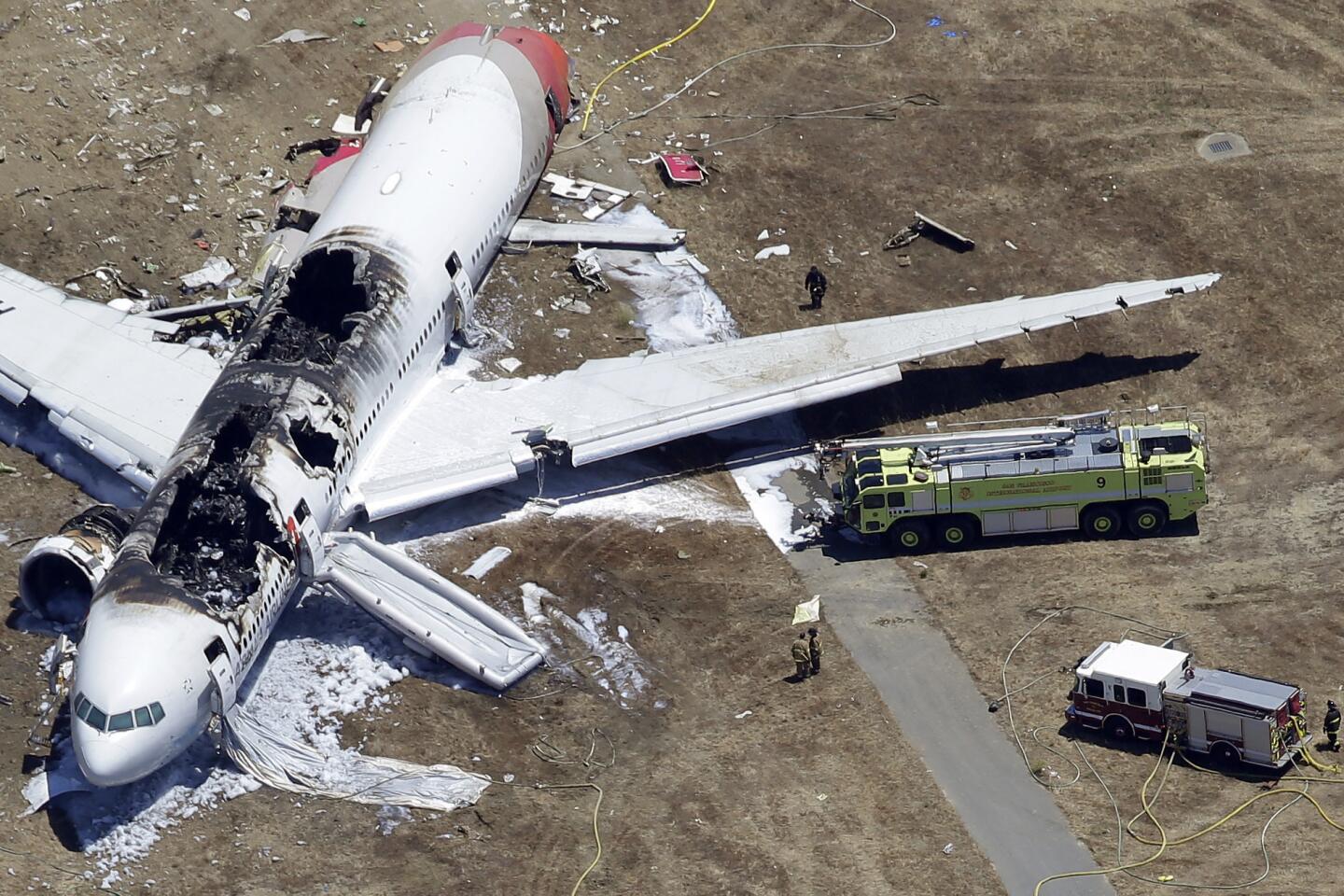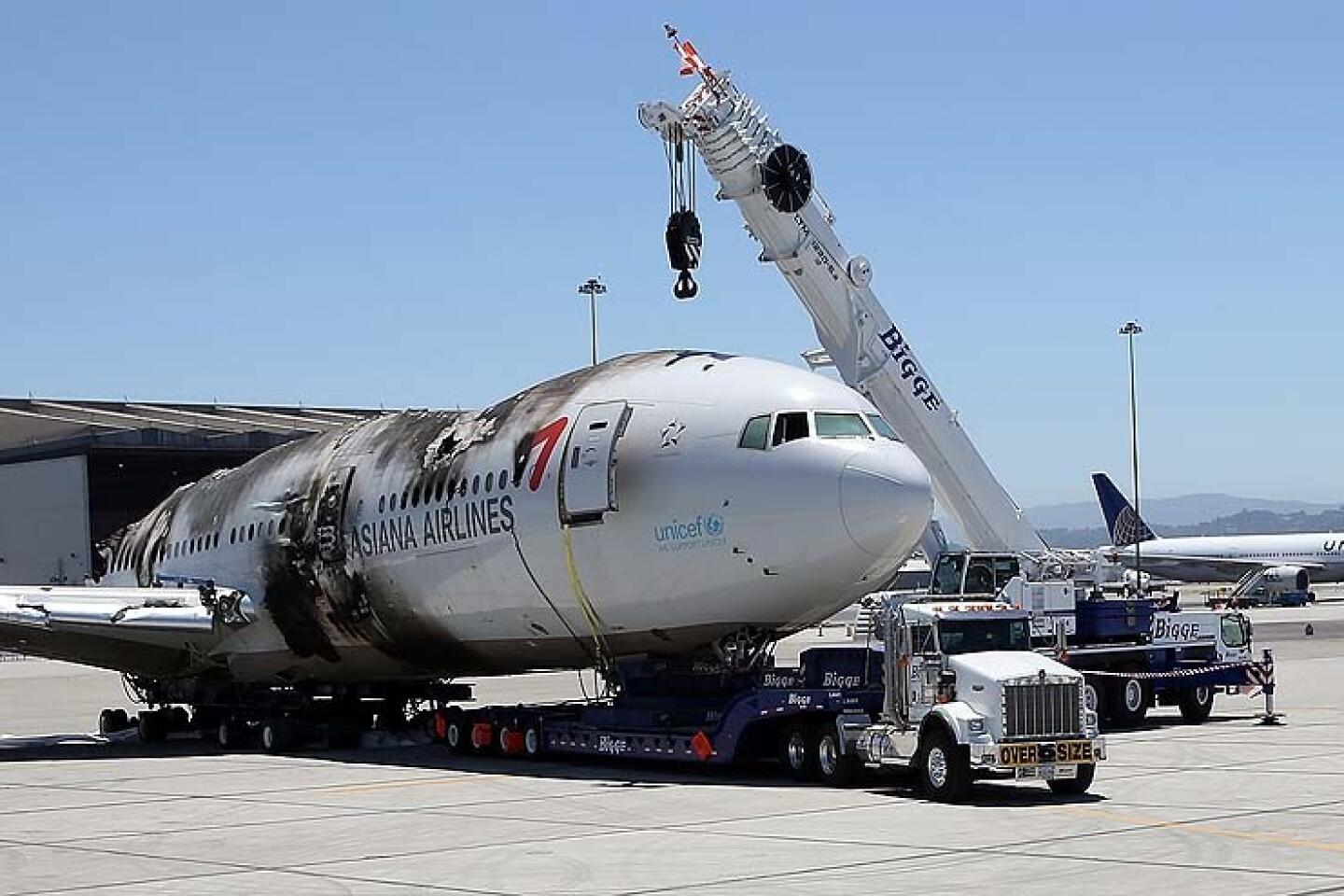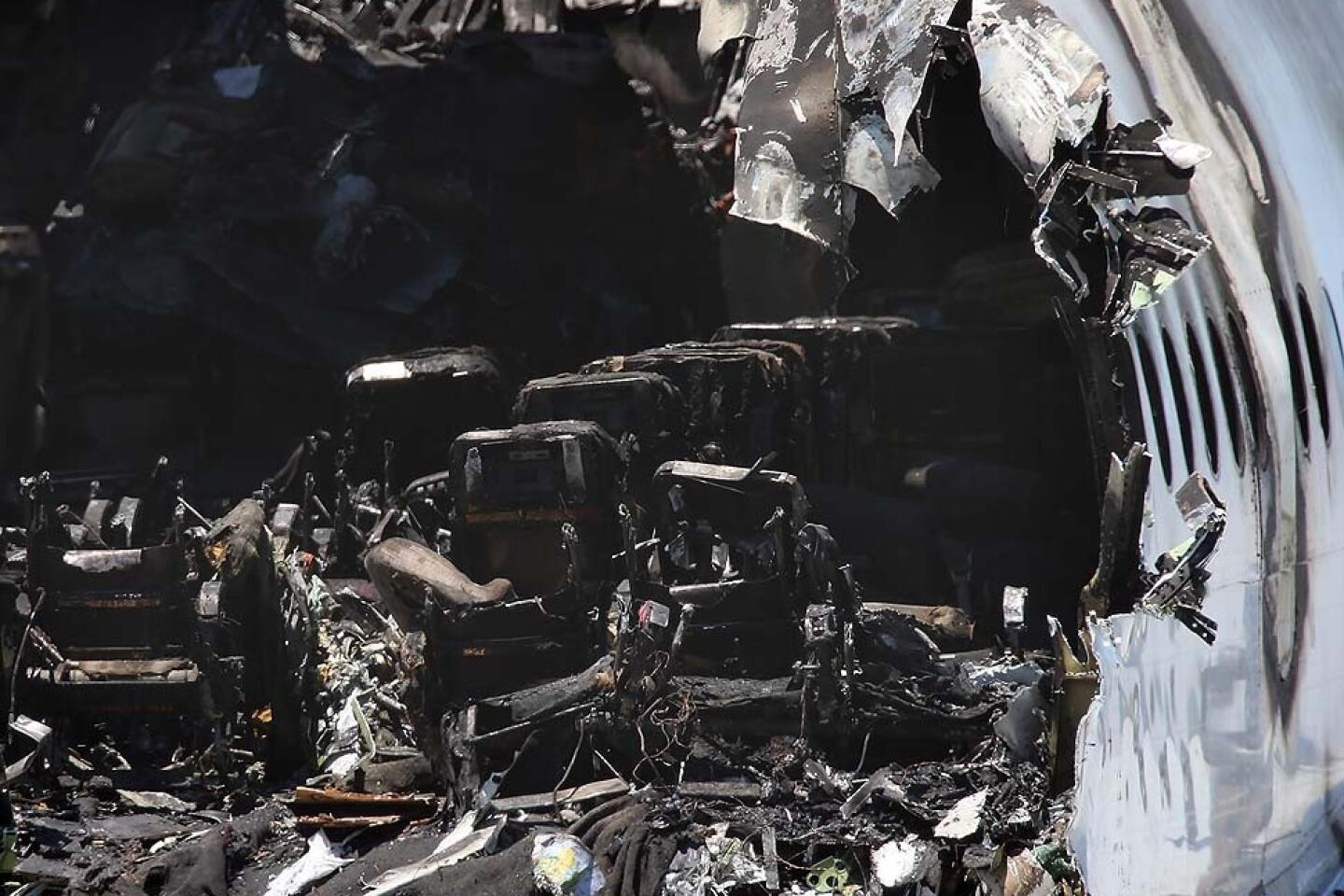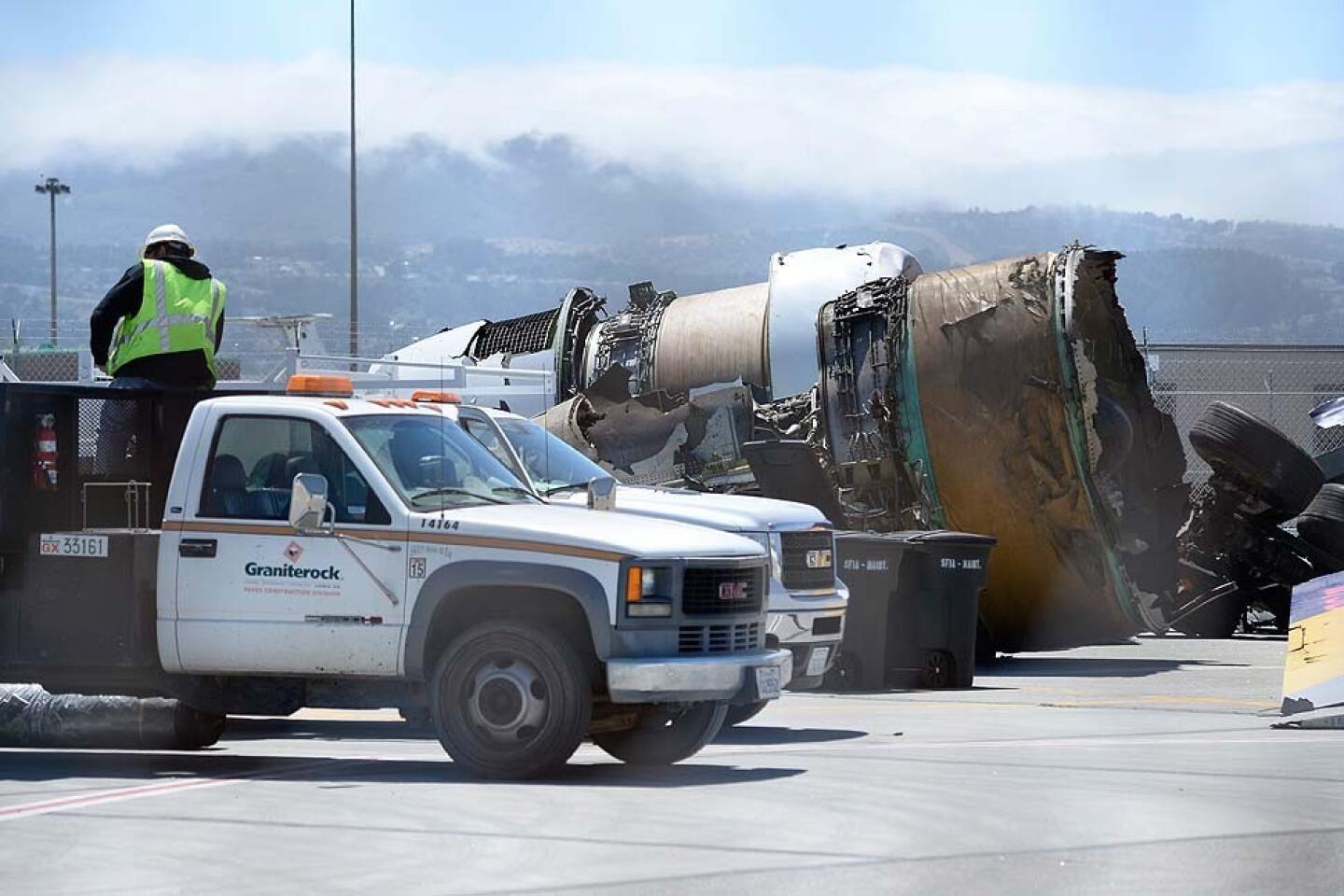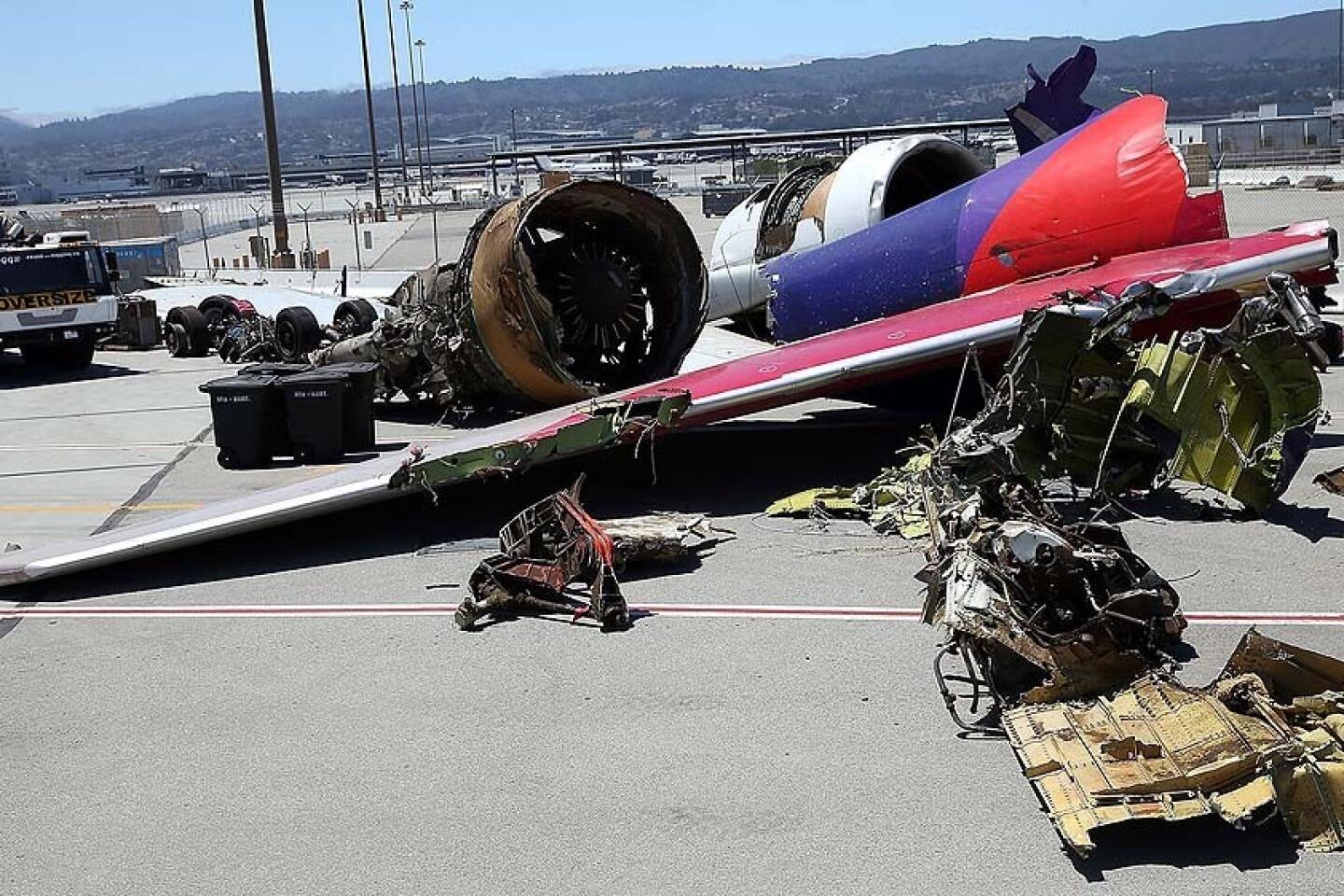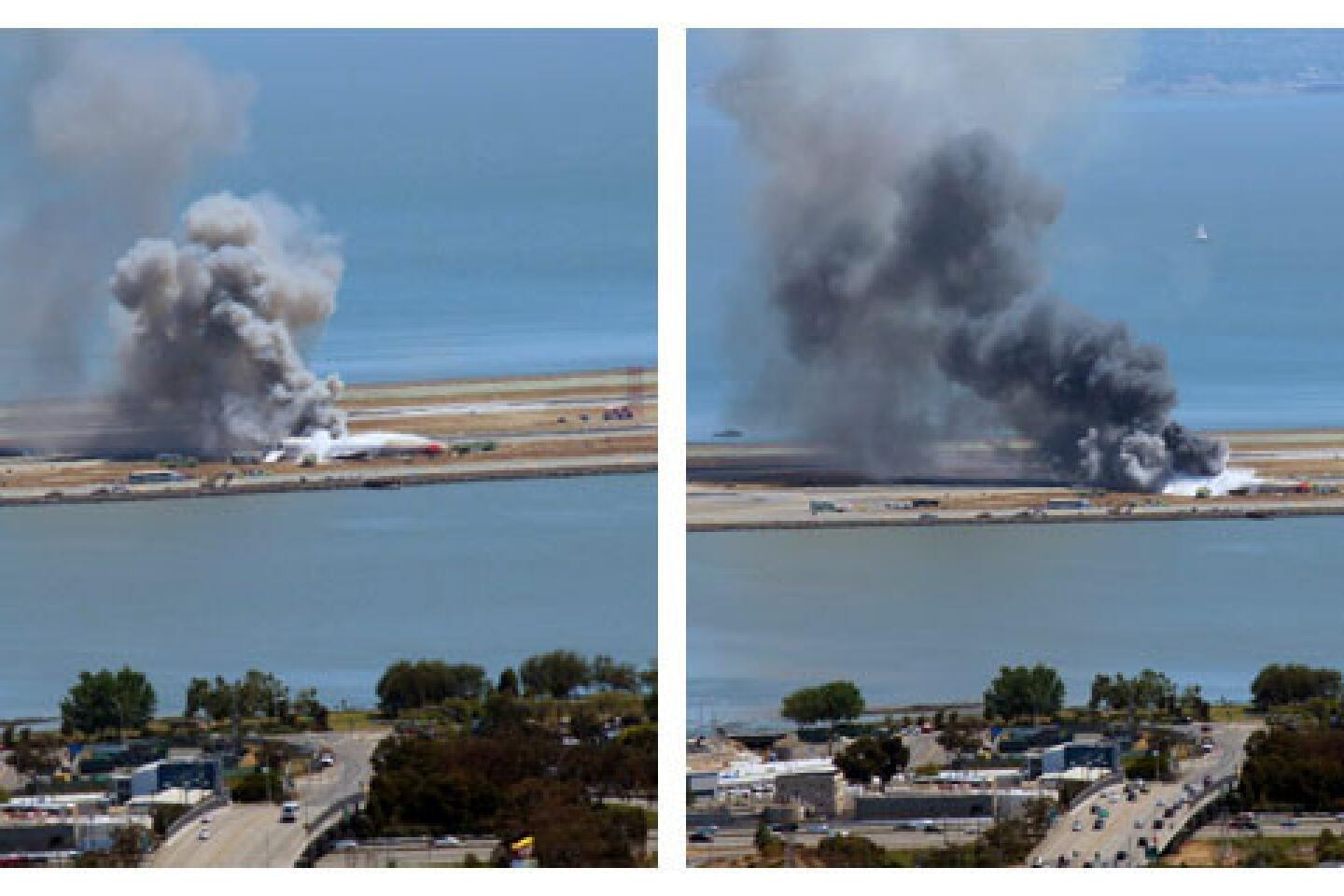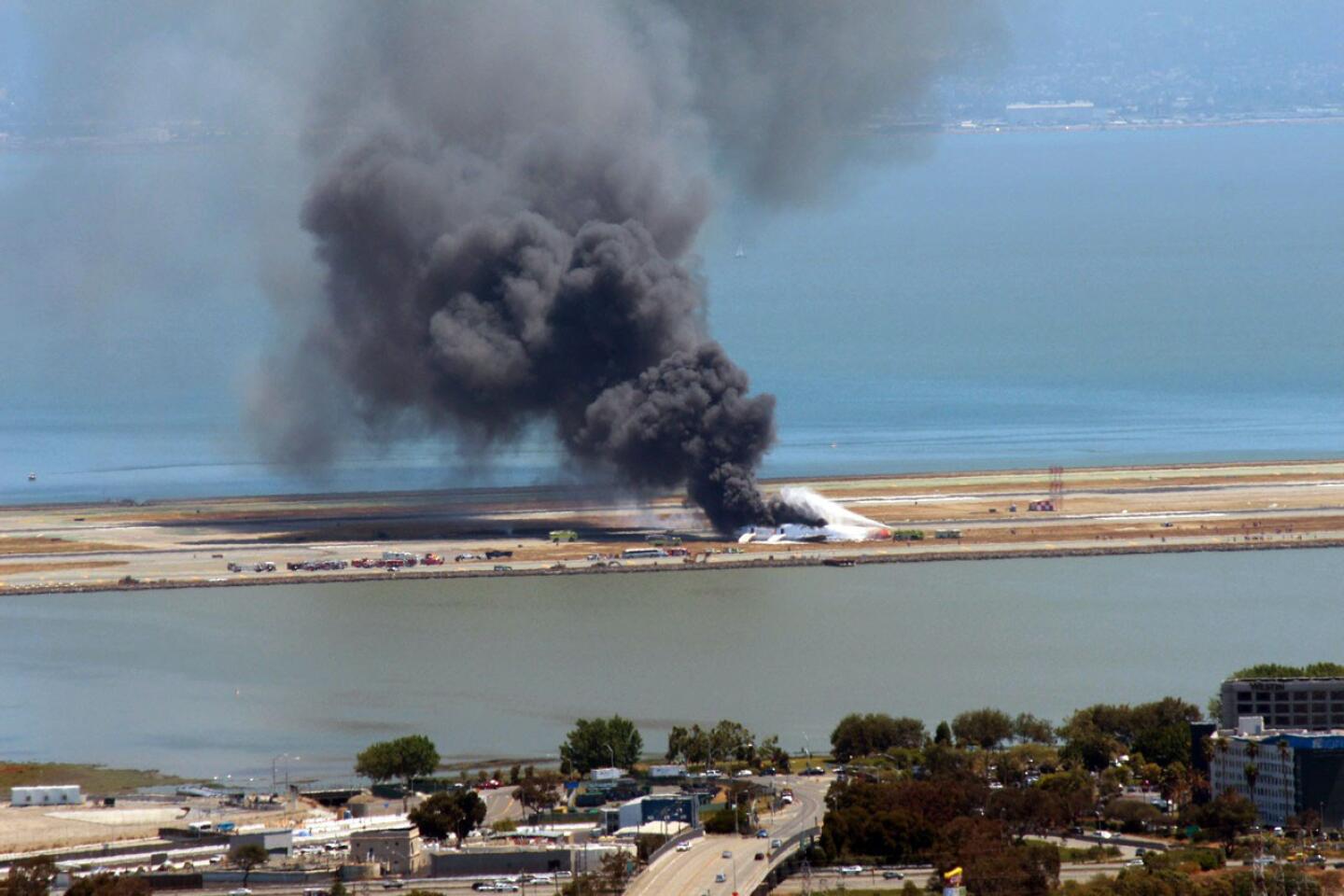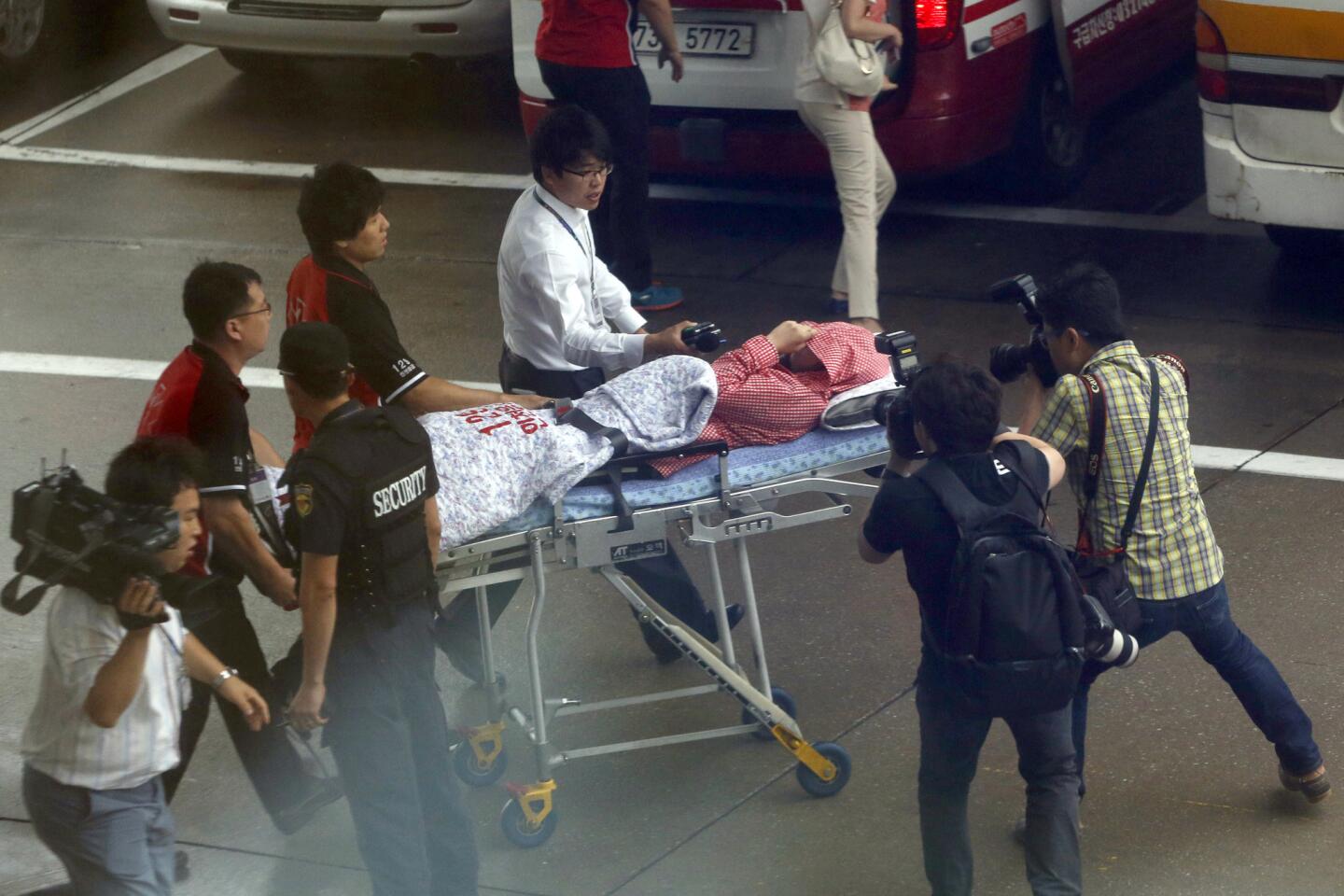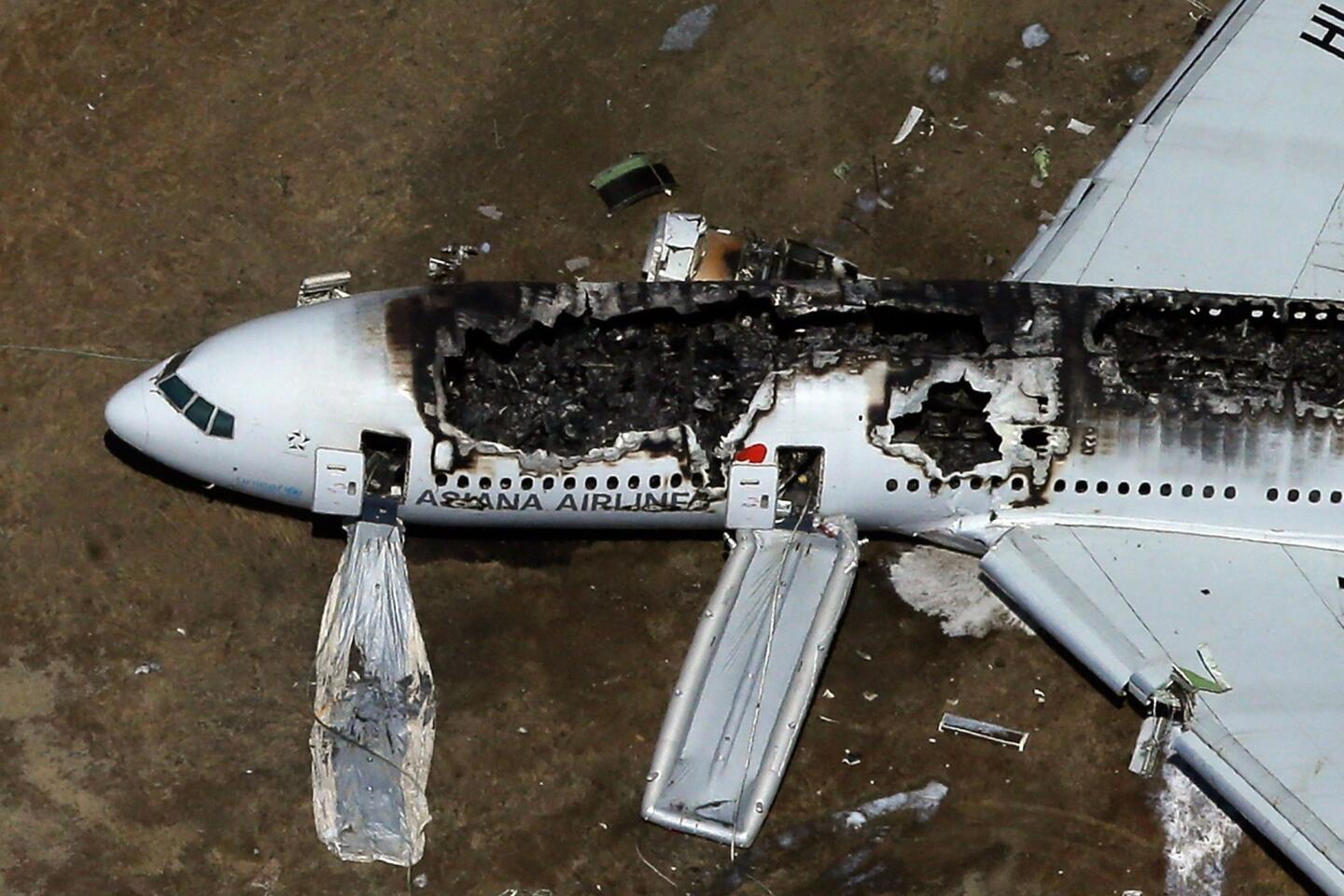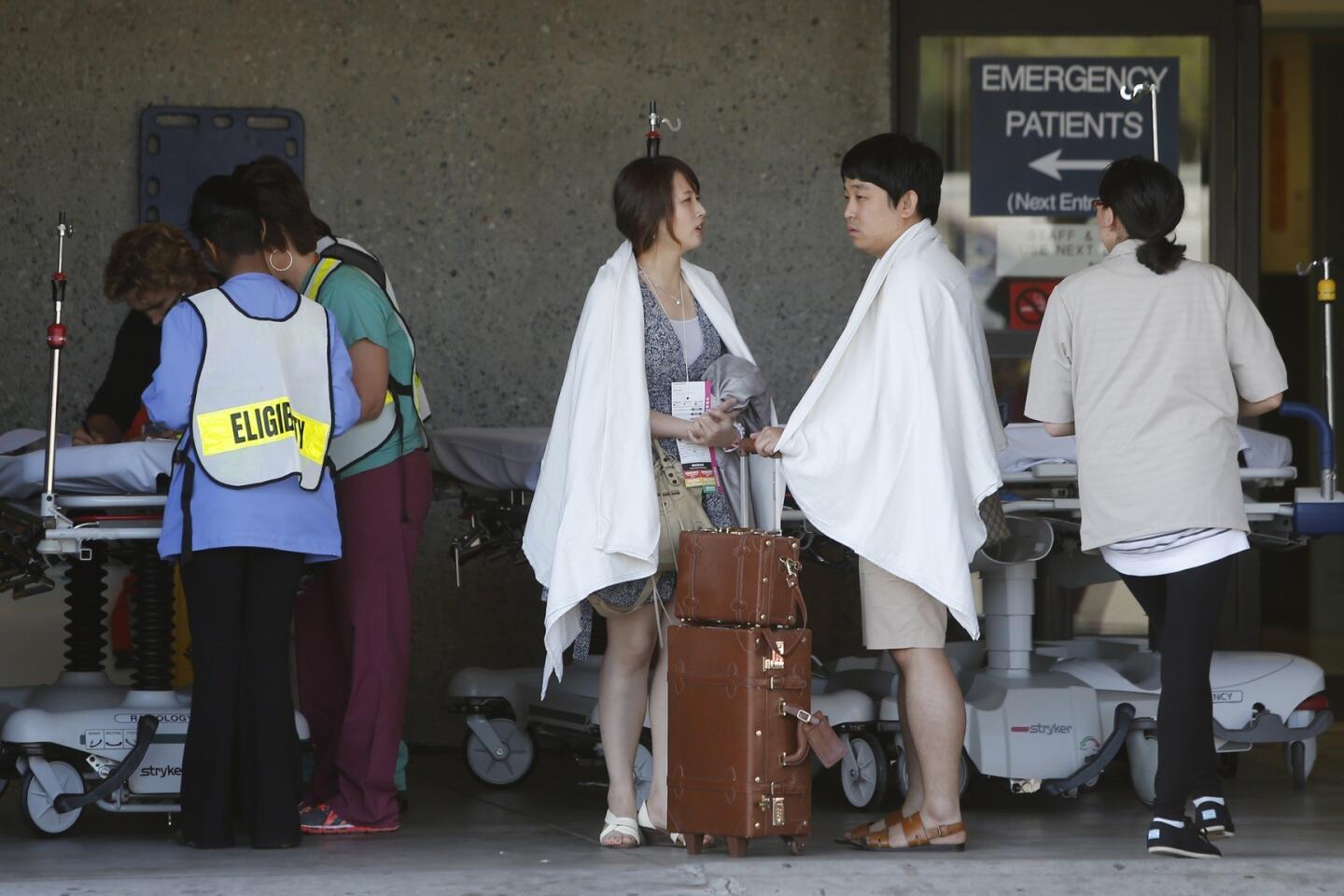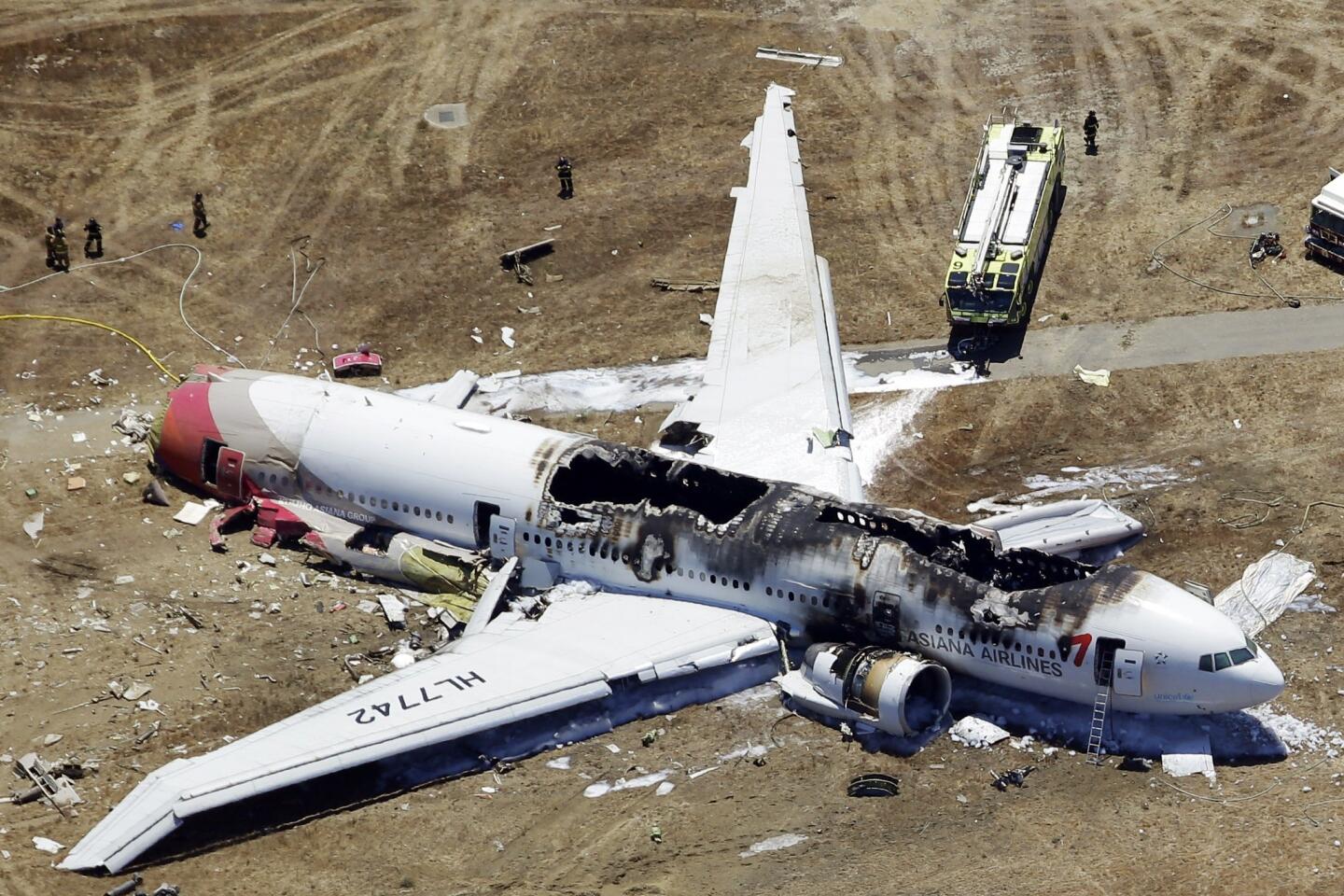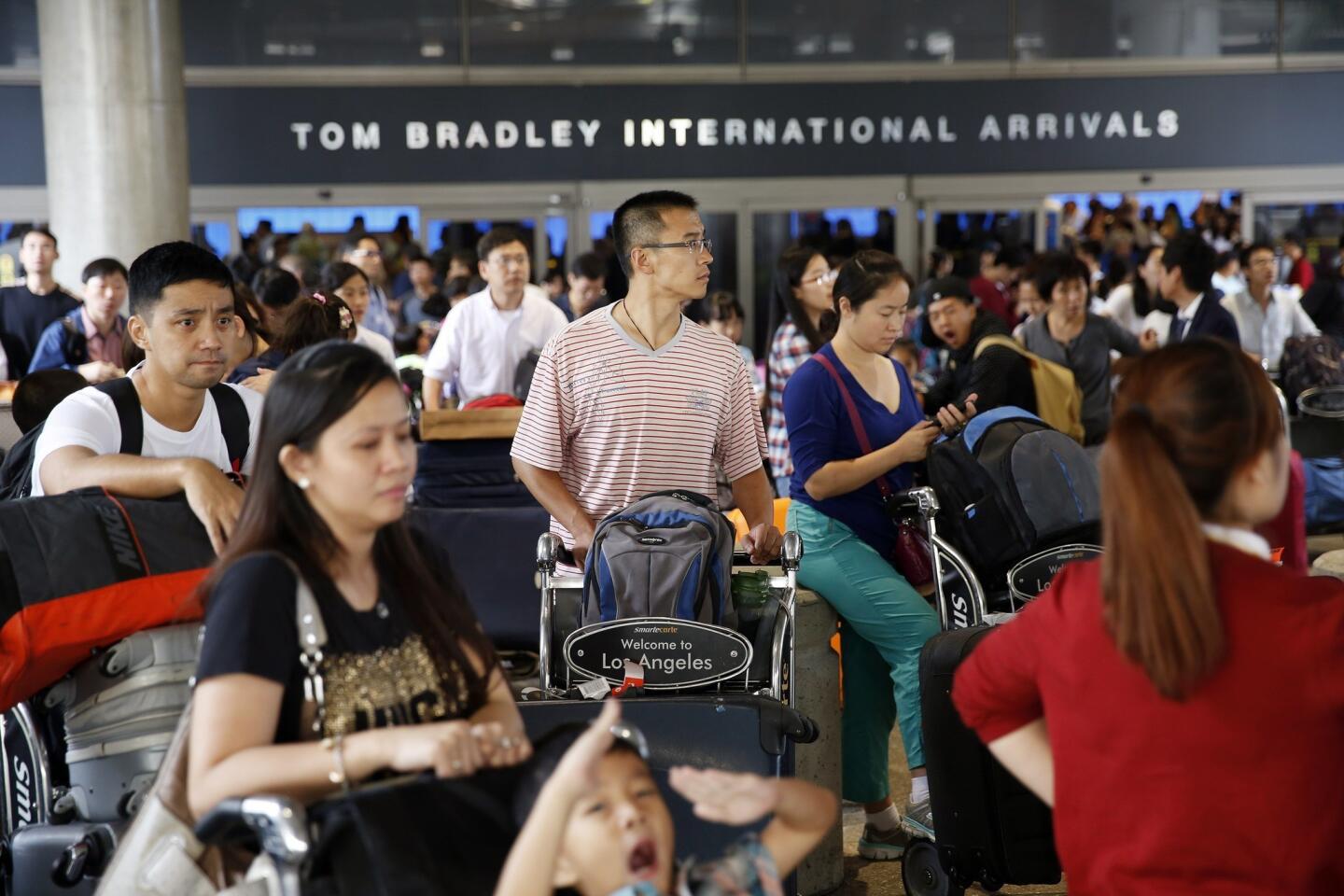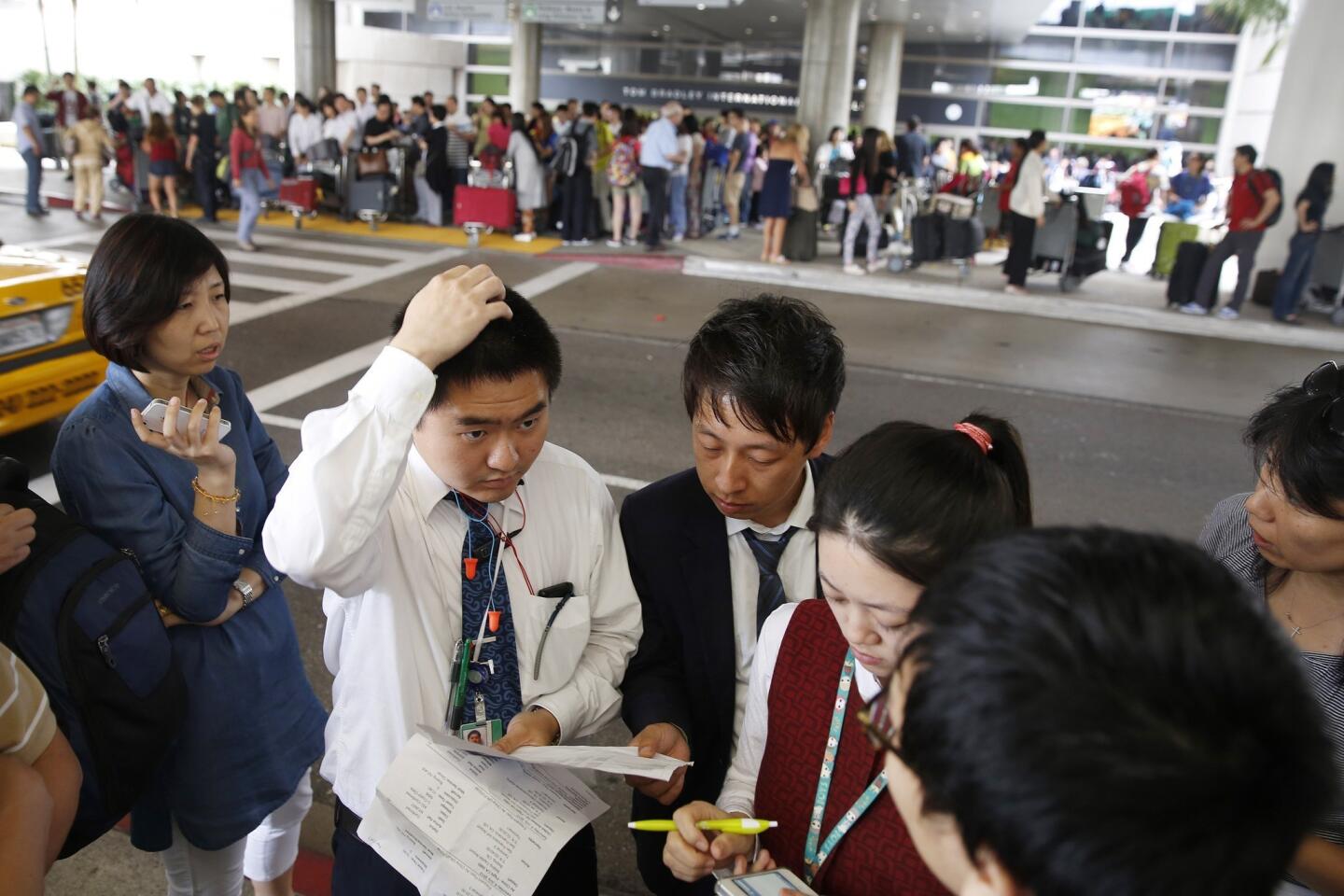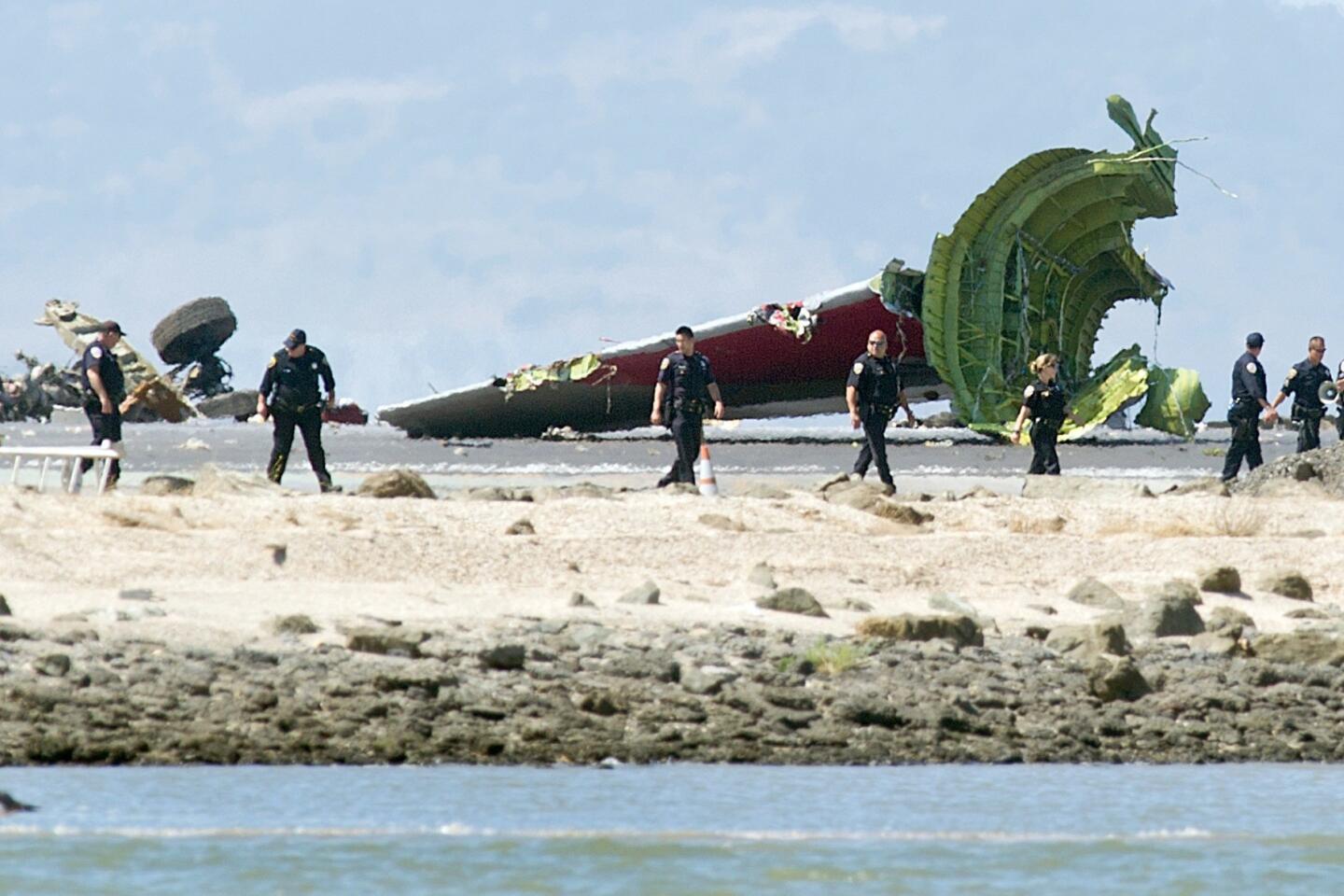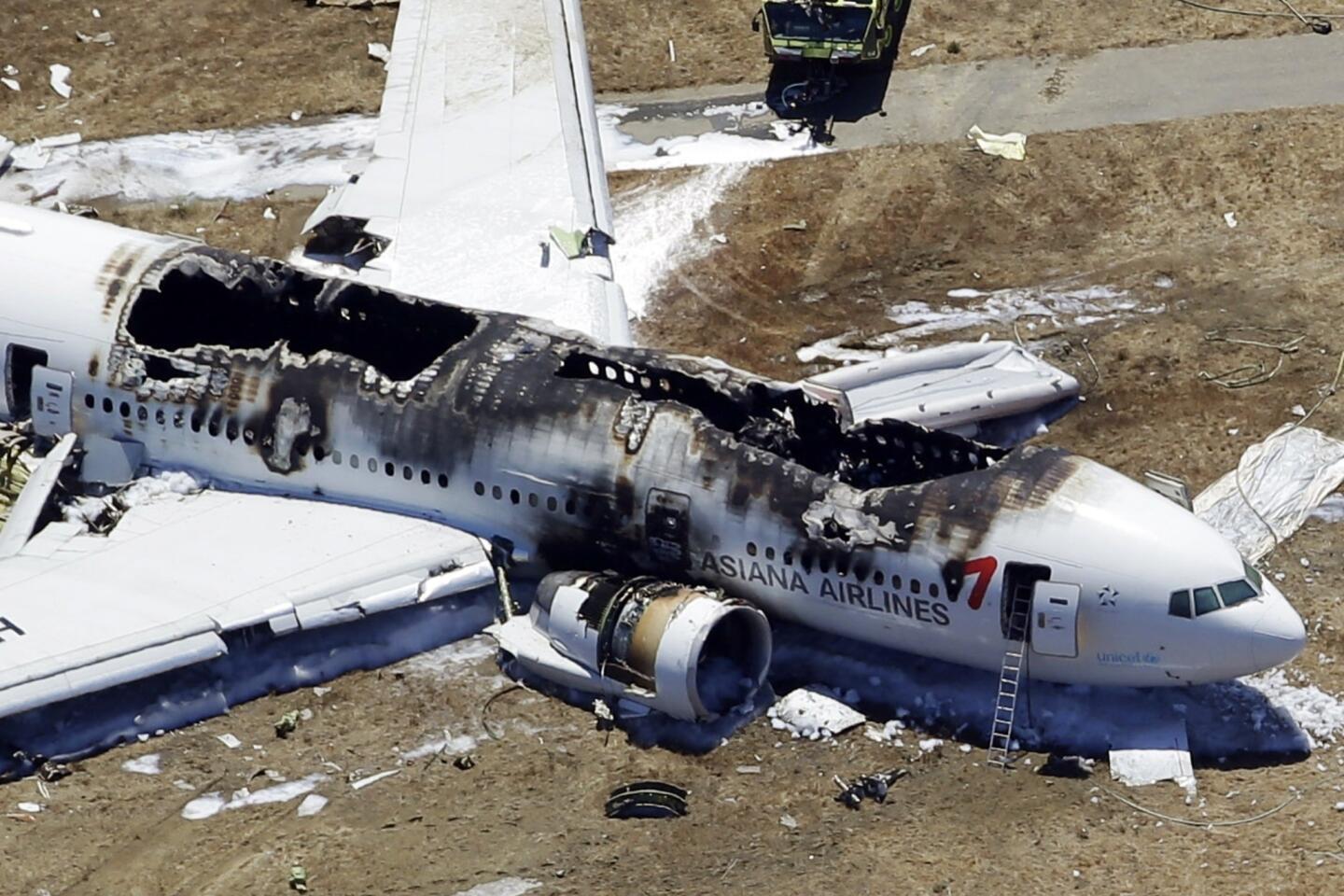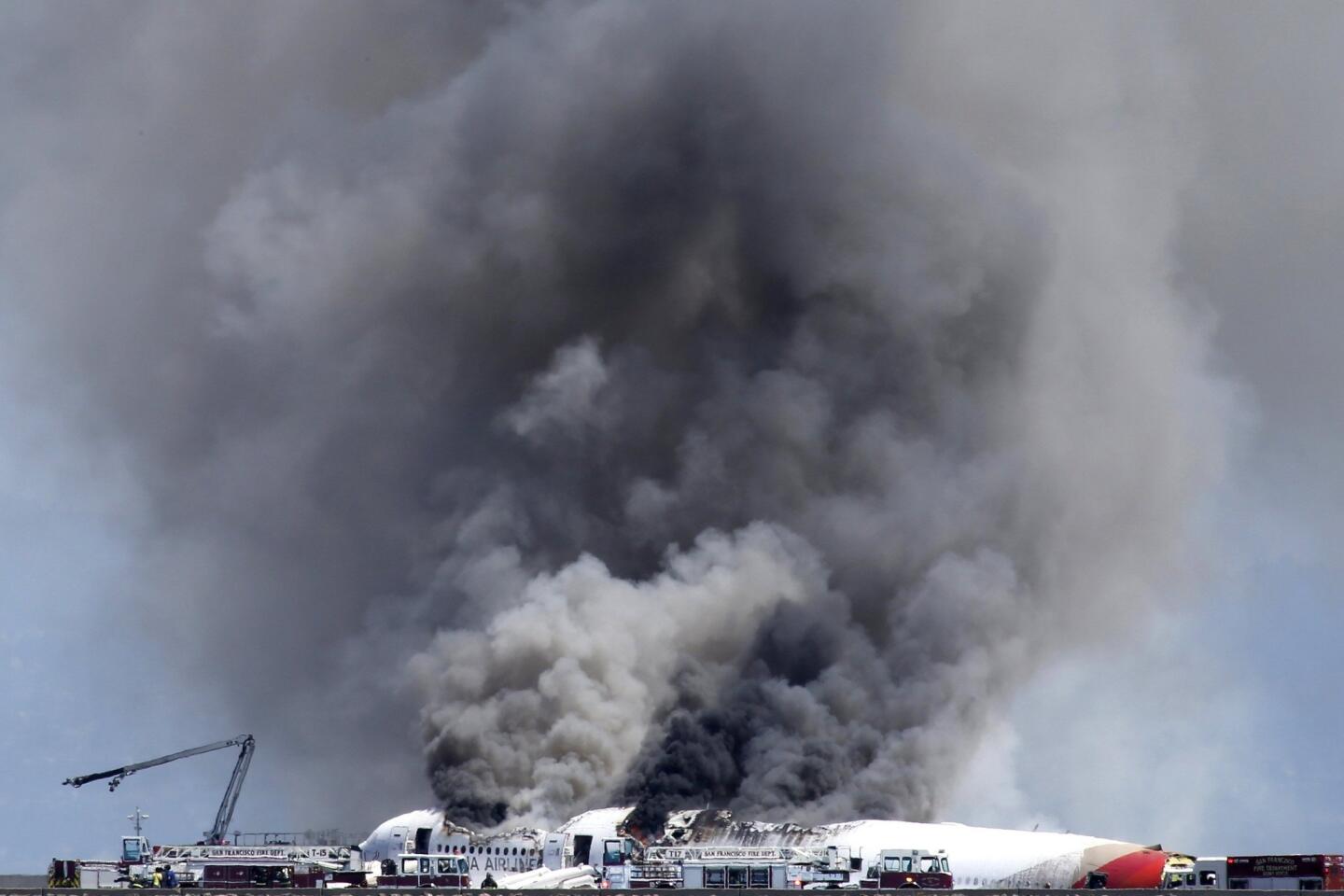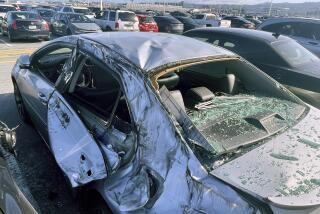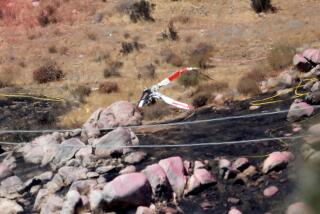L.A. Now Live: New details on Asiana Airlines crash emerge
The Asiana Airlines jetliner that crash-landed at San Francisco International Airport had fallen more than 30 knots below its target landing speed seconds before it crashed, but both its engines were revving up at the time of impact, federal accident investigators say.
Join us at 9 a.m. as we discuss the latest on the Asiana Airlines crash with Times reporters Dan Weikel and Lee Romney.
At 500 feet and 34 seconds before impact, the plane dropped well below target landing speed of 137 knots to 134 knots.
Speed continued to decrease as the plane continued its decent. At three seconds prior to impact, the flight data recorder “recorded its lowest speed, of 103 knots,” said NTSB chairwoman Deborah Hersman. Engines at the time were at about 50% power and engine power was increasing. At impact, air speed was 106 knots, she said, meaning it was speeding up.
Flight 214 had been cleared by Northern California TRACON for a 17-mile, straight visual approach to the airport, officials said. Communication was passed to SFO air-traffic control tower operators, who heard no distress calls or any other indication that something had gone wrong. Controllers help aircraft avoid each other in the air and on the runway, officials said, but successfully landing the plane is the responsibility of the pilot.
The NTSB will look at other flights that used the same runways, nearly two miles long, in days before the accident, Hersman said. The airport was renovating the runways to move the landing area closer to the terminal buildings. Officials had told pilots that, as a result, some flight-aids, including a tool that helps control the plane’s descent angle, would be disabled until Aug. 22.
More to Read
Sign up for Essential California
The most important California stories and recommendations in your inbox every morning.
You may occasionally receive promotional content from the Los Angeles Times.
